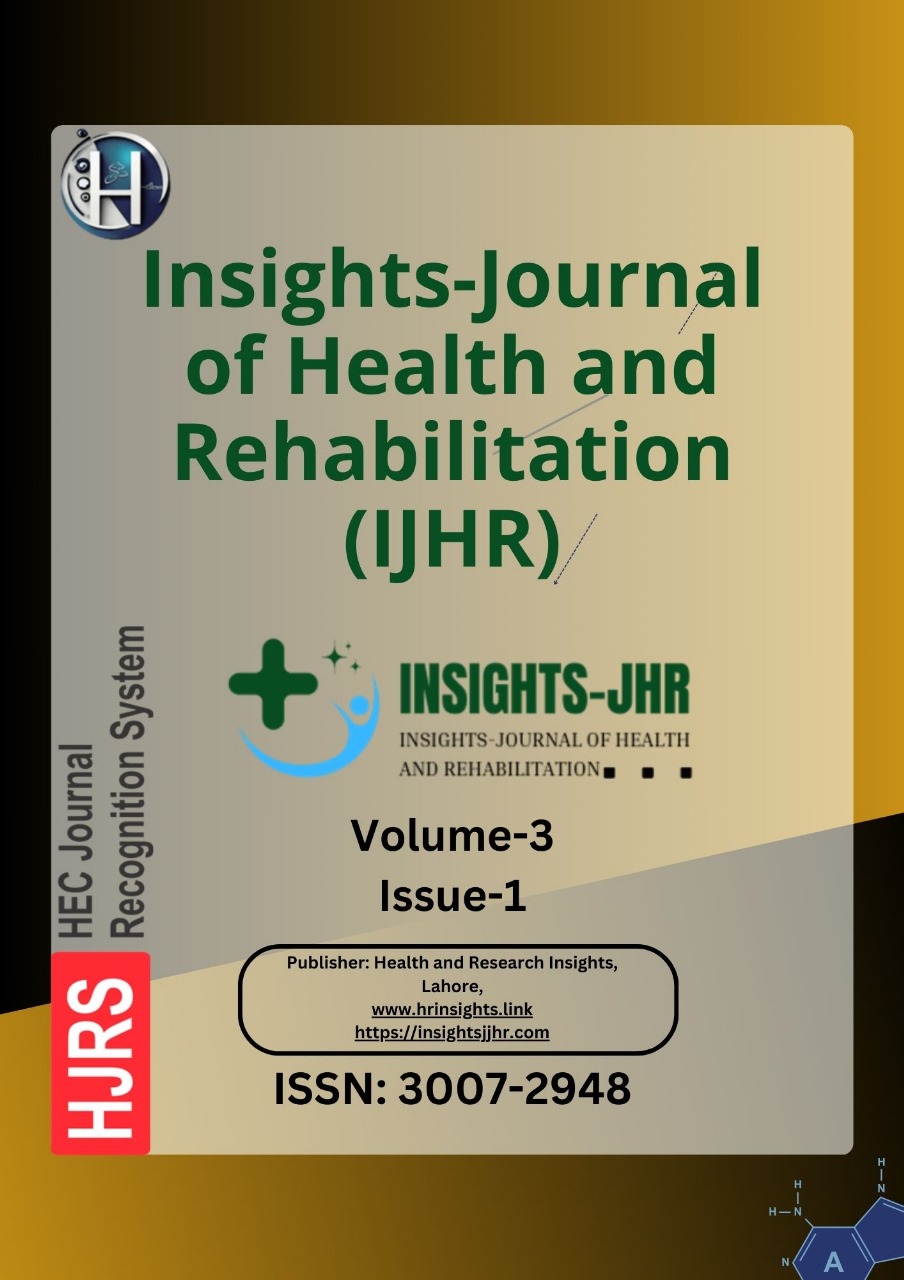EFFECTS OF BOBATH EXERCISES COMBINED WITH GASOTRANSMITTER ON SPASTIC DIPLEGIC CP
DOI:
https://doi.org/10.71000/wm484v10Keywords:
Balance, Bobath Therapy, Cerebral Palsy, Gasotransmitter, Motor Function, Neuromodulation, SpasticityAbstract
Background: Spastic diplegic cerebral palsy (CP) is a neurological disorder primarily affecting lower limb movement due to impaired motor control and increased muscle tone. Gasotransmitters such as nitric oxide (NO) and hydrogen sulfide (H₂S) have shown potential neuromodulatory benefits in various neurological conditions. Although Bobath exercises are widely used for CP management, the adjunct use of gasotransmitter therapy remains underexplored. This study aimed to evaluate the effects of combining Bobath exercises with gasotransmitter therapy on motor function, spasticity, and balance in children with spastic diplegic CP.
Objective: To assess the impact of adjunct gasotransmitter therapy with Bobath exercises on motor function, spasticity reduction, and balance improvement in children with spastic diplegic CP.
Methods: A randomized controlled trial was conducted on 48 children aged 6–18 years diagnosed with spastic diplegic CP. Participants were randomly allocated into three groups: Group A (Bobath exercises only), Group B (gasotransmitter therapy only), and Group C (Bobath exercises with gasotransmitter therapy). Motor function was assessed using the Gross Motor Function Measure (GMFM), spasticity was evaluated via the Modified Ashworth Scale (MAS), and balance was measured using the Pediatric Balance Scale (PBS). Statistical analysis was performed using the Wilcoxon signed-rank test and Kruskal-Wallis test, with a significance level of p < 0.05.
Results: Group C demonstrated the most significant improvements in GMFM scores, increasing from 48.25 ± 7.04 to 65.69 ± 7.50 (p < 0.001). MAS scores showed a reduction from 3.06 ± 0.85 to 1.06 ± 0.85 (p = 0.003), indicating decreased spasticity. PBS scores improved significantly from 15.19 ± 3.54 to 25.25 ± 3.66 (p < 0.001), highlighting better postural control and balance compared to Groups A and B.
Conclusion: Bobath exercises combined with gasotransmitter therapy resulted in greater improvements in motor function, spasticity reduction, and balance enhancement than Bobath exercises alone. These findings support the integration of gasotransmitter therapy as a complementary intervention for optimizing rehabilitation outcomes in children with spastic diplegic CP.
Downloads
Published
Issue
Section
License
Copyright (c) 2025 Hafsa Abid, Saleh Shah, Muhammad Naveed Babur, Iqra Ikram (Author)

This work is licensed under a Creative Commons Attribution-NonCommercial-NoDerivatives 4.0 International License.







